Screecher sail - Flingtime
Main menu:
Screecher sail
Flingtime's screecher is not quite mainstream.
After having given up the idea some years earlier, mainly due to the the expense and complications of retro-fitting a prodder, we discovered that a screecher would have been the sail of choice for much of the 2013 voyage northwards.
Along the way the 'classical' type spinnaker was used a lot of the time, maybe 60% of the time, and with some effort could effectively be used on of points-of-sail from port beam reach to starboard beam reach with effortless gybing. We had a lot of time to think about it, and after arriving in Cairns, decided to trade off the complications of a prodder for a simple fixed mounting on either bow. After several phone calls to Evolution Sails who made our new main and jib, we finalized the specification for a 'heavy weather' screecher in blue and white. We had thoughts of a bright, clourful screecher but the heavy cloth only comes in red, white, or blue.
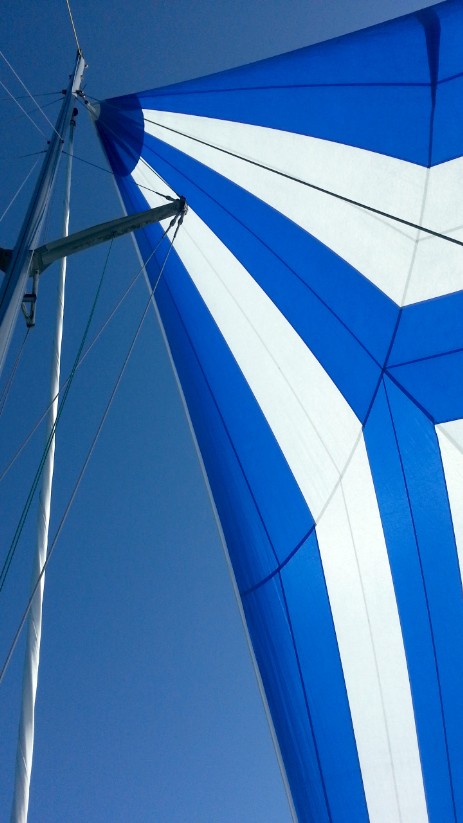
This list might change over time as experience is gained. It will be interesting to determine the optimal changeover point from our spinnaker to the screecher.
The advantages of the rigging arrangement are several:-
- can use the sail through an extended range of apparent wind right up to 40 degrees
- excellent visibility as it is off to one side (with a hugh shade bonus... half of the time)
- convenient straight line run for the continuous furling lines.
- sheer strength of the set up which is designed for fairly heavy weather up to about 30 knots.
The signigicant disadvantage is needing to fully furl and re-attach to the opposite bow when needing to tack.
However, it is for cruising and in our experience we tend to tack infrequently on most coastal passages.
The huge shadow the sail can cast in certain conditions is a big bonus for tropical sailing.
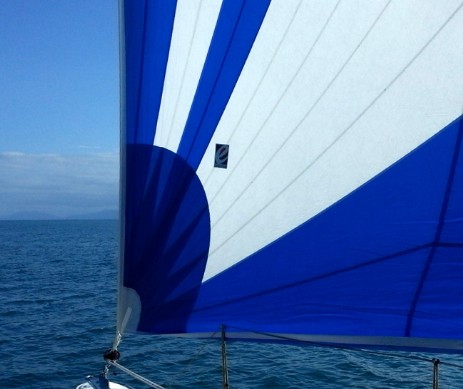
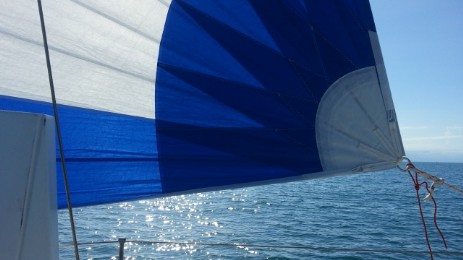
The rigging consists of snap shackling the furler to a bow eye, leading the two furler lines via a twin line stanchion guide and attaching the double block with cam cleat to an eye aft, where the furling line may be winched if necessary.
The fully furled sail is hoisted with the spinnaker halyard. Accidental unfurling is a potential problem so the sail foot is tied and a furler lock wedge clips into the furling drum to prevent rotation.
For upwind sailing, the sheet is led outboard to a Spinlock cam block aft which is on a strop to the aft mooring cleat. It can then be winched.
The sail cloth is heavy weight and takes a fair load.
Close hauled in a good breeze we can get 8.5 knots on screacher alone. (Hull speed is calculated as 7.8 knots). However, the strain on the rig is significant so we have an upper limit of 18 knots of true wind speed for using the screecher upwind.
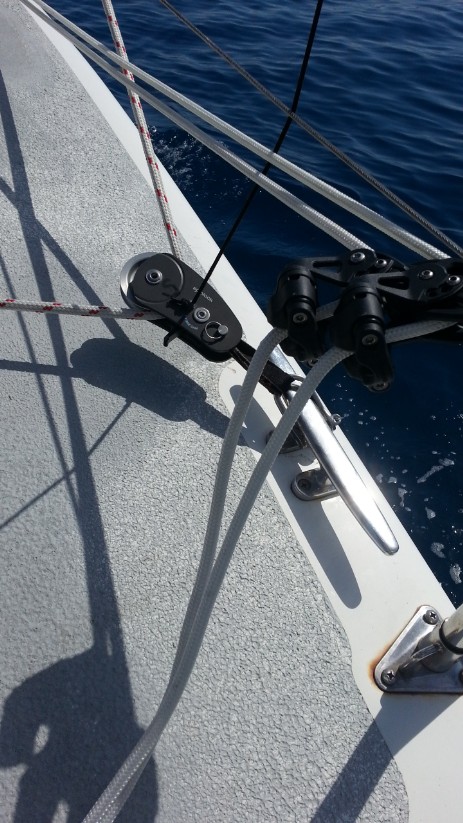
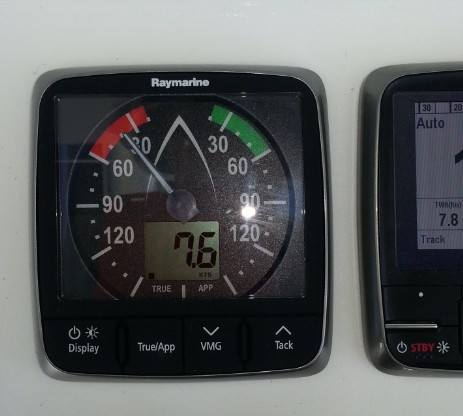
The screecher can effectively point up to 40 degrees apparent wind in moderate conditions. This was a bonus from bow mounting as the sail can be flown quite flat alongside one hull or the other.
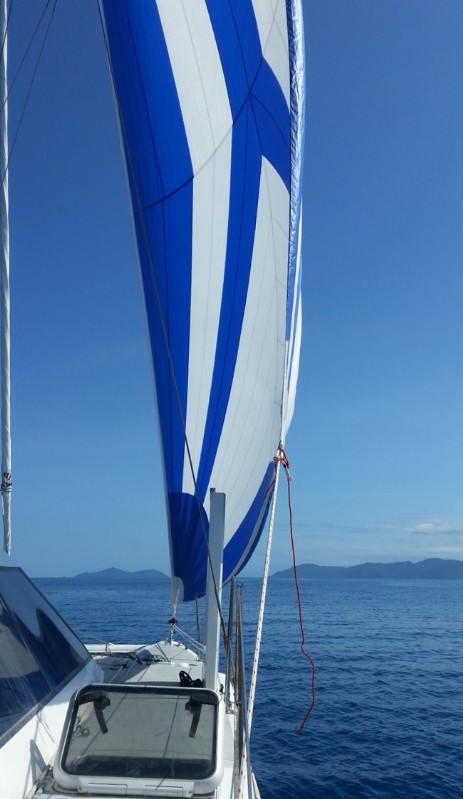
The bow mounted screecher produces lots of shade ... half of the time.
Susan and Grant luxuriating on the shady trampoline.
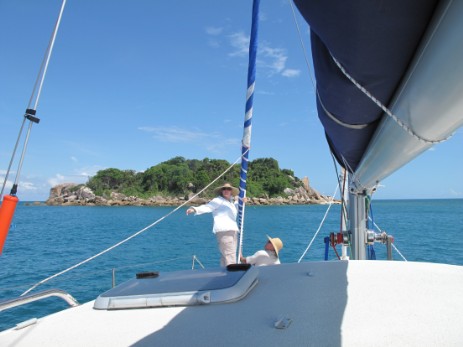
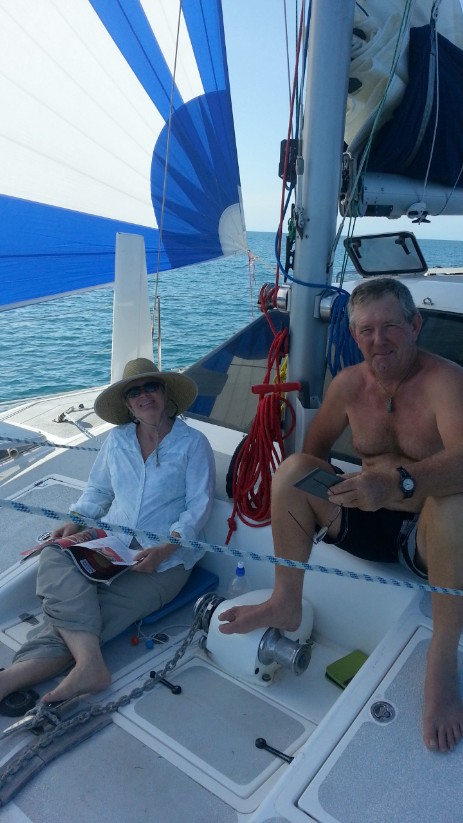
Screecher furled on portside bow off Little Fitzroy Island.
Screecher sailing downwind in strong winds of 20+ knots. Initially the sheet was run outboard as per spinnaker but trial and error found that it works really well, without any interference, when sheeted inboard and well aft via a snatch block to the jammer and winch.
